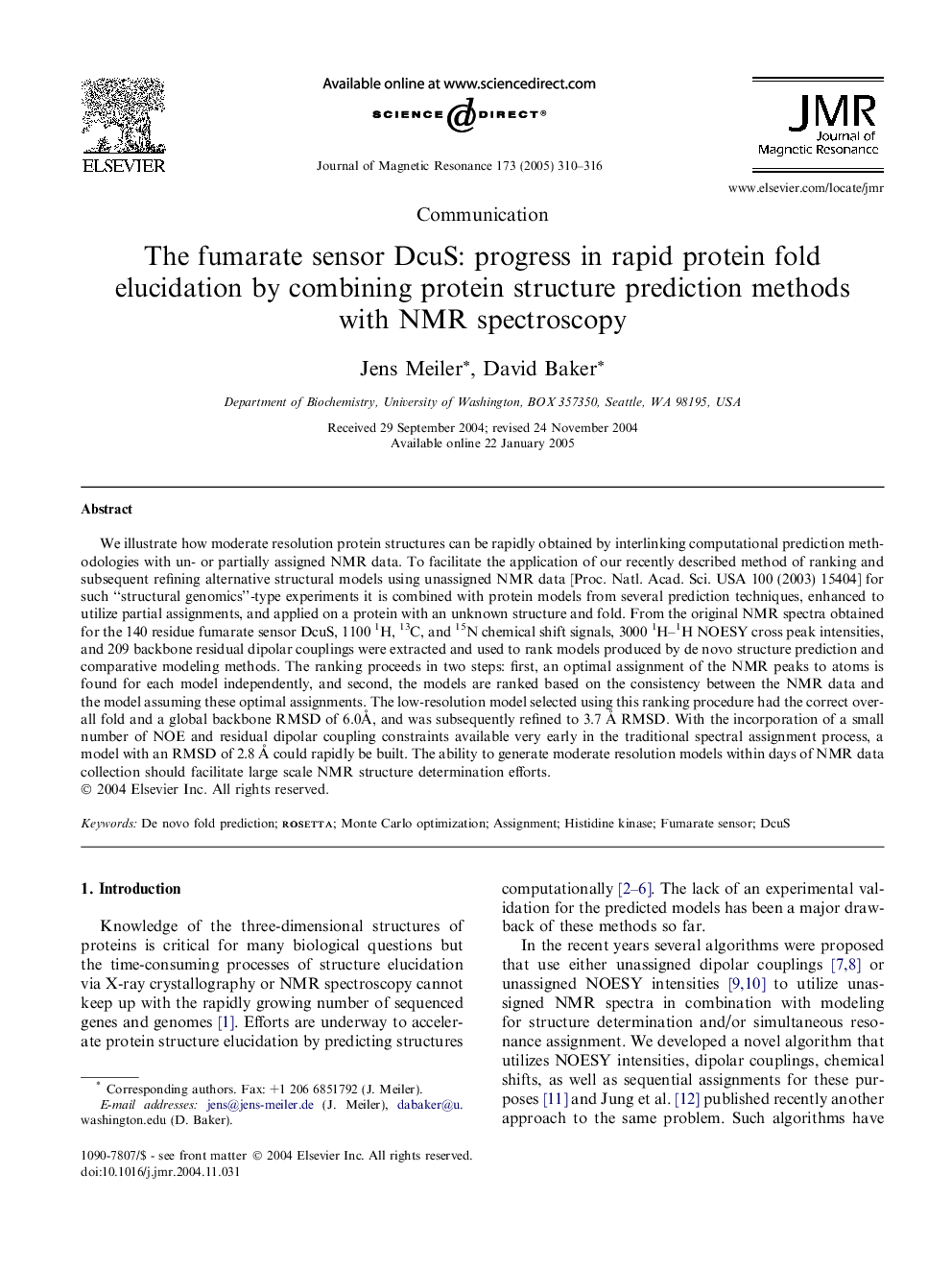| کد مقاله | کد نشریه | سال انتشار | مقاله انگلیسی | نسخه تمام متن |
|---|---|---|---|---|
| 9587489 | 1393245 | 2005 | 7 صفحه PDF | دانلود رایگان |
عنوان انگلیسی مقاله ISI
The fumarate sensor DcuS: progress in rapid protein fold elucidation by combining protein structure prediction methods with NMR spectroscopy
دانلود مقاله + سفارش ترجمه
دانلود مقاله ISI انگلیسی
رایگان برای ایرانیان
کلمات کلیدی
موضوعات مرتبط
مهندسی و علوم پایه
شیمی
شیمی تئوریک و عملی
پیش نمایش صفحه اول مقاله

چکیده انگلیسی
We illustrate how moderate resolution protein structures can be rapidly obtained by interlinking computational prediction methodologies with un- or partially assigned NMR data. To facilitate the application of our recently described method of ranking and subsequent refining alternative structural models using unassigned NMR data [Proc. Natl. Acad. Sci. USA 100 (2003) 15404] for such “structural genomics”-type experiments it is combined with protein models from several prediction techniques, enhanced to utilize partial assignments, and applied on a protein with an unknown structure and fold. From the original NMR spectra obtained for the 140 residue fumarate sensor DcuS, 1100 1H, 13C, and 15N chemical shift signals, 3000 1H-1H NOESY cross peak intensities, and 209 backbone residual dipolar couplings were extracted and used to rank models produced by de novo structure prediction and comparative modeling methods. The ranking proceeds in two steps: first, an optimal assignment of the NMR peaks to atoms is found for each model independently, and second, the models are ranked based on the consistency between the NMR data and the model assuming these optimal assignments. The low-resolution model selected using this ranking procedure had the correct overall fold and a global backbone RMSD of 6.0Ã
, and was subsequently refined to 3.7Â Ã
RMSD. With the incorporation of a small number of NOE and residual dipolar coupling constraints available very early in the traditional spectral assignment process, a model with an RMSD of 2.8Â Ã
could rapidly be built. The ability to generate moderate resolution models within days of NMR data collection should facilitate large scale NMR structure determination efforts.
ناشر
Database: Elsevier - ScienceDirect (ساینس دایرکت)
Journal: Journal of Magnetic Resonance - Volume 173, Issue 2, April 2005, Pages 310-316
Journal: Journal of Magnetic Resonance - Volume 173, Issue 2, April 2005, Pages 310-316
نویسندگان
Jens Meiler, David Baker,